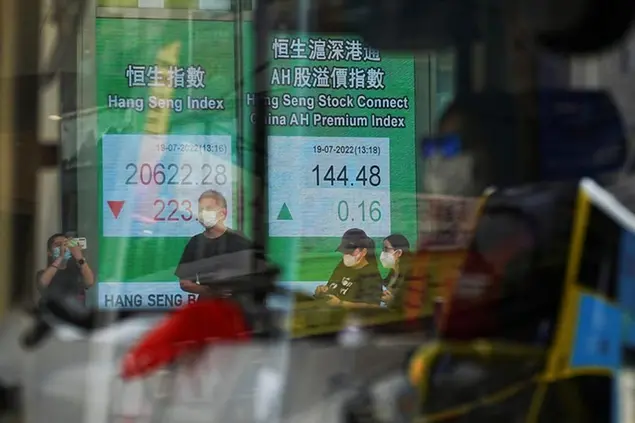PHOTO
SINGAPORE: Asian shares and U.S. Treasury yields slid while the Swiss franc and yen rose on safety bids on Friday after weaker-than-expected U.S. factory data sparked fears of a worsening economic outlook.
Japan's Nikkei was meanwhile headed for its worst day in over four years, tracking a slide on Wall Street and weighed down by a surging yen, as well as uncertainty over how high domestic interest rates could rise.
A measure of U.S. manufacturing activity dropped to an eight-month low in July amid a slump in new orders, data on Thursday showed, coming just after separate figures revealed the number of Americans filing new applications for unemployment benefits increased to an 11-month high last week.
The weak ISM manufacturing report in particular spooked investors, sparking broad risk-off moves across markets even after the U.S. Federal Reserve had earlier in the week signalled a rate cut could come as soon as September.
Geopolitical tension also weighed on sentiment, after the Israeli military said on Thursday that the head of Hamas' military wing, Mohammed Deif, was killed in an Israeli airstrike in Gaza last month. The comments came a day after the group's political leader Ismail Haniyeh was killed in Tehran.
"At the moment ... if there's any signs of weakness, then the market will grasp them. It's looking for bad news," said Rob Carnell, ING's regional head of research for Asia-Pacific.
MSCI's broadest index of Asia-Pacific shares outside Japan slumped 0.8% in early Asia trade, tracking a sharp selloff on Wall Street.
U.S. stock futures also extended their declines, with Nasdaq futures tumbling 1.5% while S&P 500 futures fell 0.9%.
EUROSTOXX 50 futures similarly slid 0.9% and FTSE futures edged 0.12% lower.
"It has been gloomy for two years in the manufacturing sector, but (the) ISM report shows that various measures of activity have sunk to levels not seen since the initial arrival of the pandemic," said economists at Wells Fargo.
"Most troubling is that this suffering comes without the merit of lower prices."
In Asia, Japan's Nikkei suffered heavy losses, tumbling more than 5% to fall below the 37,000 level for the first time since April.
It was last 4.89% lower, on track for its steepest daily fall since March 2020.
The Nikkei's decline has largely come on the back of sharp yen gains after the Bank of Japan (BOJ) on Wednesday raised interest rates to levels unseen in 15 years and unveiled a detailed plan to slow its massive bond buying.
The yen was last 0.2% lower at 149.65 per dollar, though remained pinned near an over four-month high.
It was eyeing a 2.8% rise for the week, with gains in the Japanese currency further exacerbated by safety flows on Friday.
The Swiss franc likewise got a lift from the risk-off mood and rose to its strongest level since early February at 0.8720 per dollar.
Sterling fell 0.09% to $1.2723, after the Bank of England cut interest rates from a 16-year high on Thursday.
Also reflecting investor worries about a U.S. economic slowdown, the 10-year Treasury yield fell to a six-month low of 3.9440% in early Asia trade, as investors poured into the safe haven bonds.
Bond yields move inversely to prices.
The two-year yield, which typically reflects near-term rate expectations, slumped to its lowest since May 2023 of 4.1090%, and was last at 4.1338%.
Futures now point to a roughly 29% chance of a 50-basis-point cut from the Fed in September.
Focus now turns to the closely watched U.S. nonfarm payrolls report later on Friday for further clues on the health of the labour market and the broader economy.
"Clearly, all the focus now falls on U.S. nonfarm payrolls in the session ahead and Asia-based equity traders will be highly cognizant that they will have to hold positions through the U.S. session with the threat of gapping risk on the Monday open," said Chris Weston, head of research at Pepperstone.
"With the market firmly moving to a mantra that bad news is bad news for risky assets and sentiment, where swaps are pricing an element of more emergency cuts, poor U.S. job numbers will not be digested well at all."
In commodities, oil prices edged higher on Friday though were set for a fourth weekly decline as signs of disappointing global fuel demand growth outweighed fears of supply disruption in the key Middle East production region.
Brent was last up 0.5% to $79.92 a barrel, while U.S. crude rose 0.54% to $76.72 per barrel.
Spot gold firmed 0.45% to $2,456.19 an ounce.
(Editing by Sam Holmes and Christopher Cushing)
